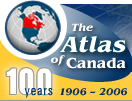|
In 2001, 79.4% of Canadians lived in an urban area with a population of 10 000 people or more, compared with 78.5% in 1996. Seven of 27 census metropolitan areas had a growth rate at least double that of the national average of 4%; the largest growth rates were in Calgary, Oshawa and Toronto. With three exceptions, the census metropolitan areas with the strongest growth were located in three regions: the extended Golden Horseshoe in southern Ontario, the Calgary-Edmonton corridor in Alberta, and British Columbia's Lower Mainland and southern Vancouver Island.
The three exceptions were Ottawa-Hull, Windsor and Halifax. Immigration played a major role in Windsor's growth (+7.3%), followed by migration from other parts of Ontario. The growth in Ottawa-Hull was the result of a mix of internal and international migration, as well as natural increase. Ottawa-Hull had nearly 1 064 000 people, a 6.5% increase.
In 2001, 20.3% of Canadians lived in rural and small town areas, down from 21.5% in 1996. The population of these areas declined in every province except Ontario, Manitoba and Alberta. The population of the most remote rural areas grew 1%. The high rate of natural increase may be attributed to the higher birth rate among Aboriginal people.
The text was adapted from Statistics Canada, A profile of the
Canadian Population: where we live, Catalogue number 96F00030XIE2001001.
Statistics Canada information is used with the permission of Statistics
Canada. Information on the availability of the wide range of data
from Statistics Canada can be obtained from the Statistic Canada’s
Regional Offices, its World Wide Web site at: www.statcan.ca,
and its toll-free access number 1-800-263-1136.
Please refer to the following Data
and Mapping Notes for information on how the map was derived.
|
